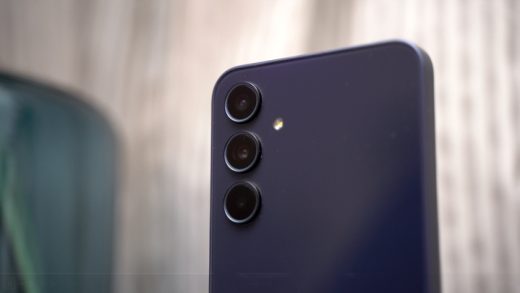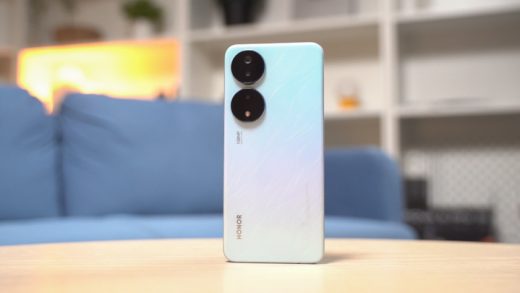ASUS plans to end the year with a bang with the release of a new smartphone under the ZenFone Max lineup, the ZenFone Max Pro M2. It is the upgrade to the ZenFone Max Pro M1 which was announced in April, and now sports a new design and improved internals. Let’s find out what this 5,000mAh-powered Android can do in our full review below.

Table of Contents
Desgin and Construction
So, here I am again reviewing another Max Pro device. Comparing the M2 from the M1, you can clearly see its design difference just by looking at them. The polycarbonate back with matte finish is now gone and has been replaced with the same material but this time, it has a 3D glossy back with a wavy design which actually looks premium. The lines at the back also expanded enough to cover all sides of the phone which I think is more aesthetically pleasing.

The M2 uses the notch design commonly found in smartphones this year, which is fine since it doesn’t those thick top and bottom bezels. It has a 6.3-inch screen with the notch that houses the 13MP camera and sensors while slightly above it are the call speaker and LED notification light. Mounted on top for protection is Corning Gorilla Glass 6.

The left side has the tray for the dual-SIM card and a dedicated microSD card slot, while the power button – volume rocker combo can be found on the right. The button placements are just right for easy reach while buttons themselves are solid yet clicky and tactile.


Up top is the noise-canceling microphone, while down at the bottom are the 3.5mm audio port, loudspeaker, main microphone, and, disappointingly for some, a micro USB port. I mean, it’s really fine but fans have been clamoring for this feature and the inclusion of the USB-C would have made the device more enticing.

Flip on its back and you’ll see the 12MP + 5MP dual cameras along with the LED flash and fingerprint scanner.

The Max Pro M2 feels solid and even though it’s made of polycarbonate material, it still has a premium feel to it. It is a fingerprint mark and smudge magnet, though, but good thing ASUS provided a free jelly case in the retail package which should remedy this concern.
Display and Multimedia
This device features a 6.3-inch Full HD+ display with an 88% screen-to-body ratio, 19:9 aspect ratio and a pixel density of 400ppi which is decent for this screen of this size. Colors are accurate and rich, and watching videos under direct sunlight is not a problem. I only adjusted its brightness at around 80% and it is already legible.

One of the feats of the Max Pro M2 is its impressive audio quality. It comes with
OS, UI, and Apps
Just like with the Max Pro M1, the Max Pro M2 runs on an almost stock Android based on Android 8.1 Oreo which is good for those who want simple and almost pure Android experience. Speaking of which, you’ll see a straightforward interface with an app drawer that can be accessed when you swipe up from the Home screen.

There are only a handful of pre-installed apps like the usual Google applications and some ASUS apps like Sound Recorder, FM Radio, and Calculator. Out of the 64GB, you’ll have 50.7GB of free storage for your own file storing pleasure which is decent already.
Camera
The Max Pro M2’s camera interface is straightforward and interesting at the same time. The top row contains the icon for mode change such as Auto, Pro, HDR, People, Landscape, Sports, Flowers, Backlight, Candlelight, Sunset, Night, Beach, and Snow while beside it is the filter, the change camera view, beauty, depth effect, and option. There’s an AI camera feature as well, but we can’t test it on our unit as the update is yet to roll out later this month.

The 12MP + 5MP rear camera shoots photos very well under good and natural lighting. Images have plenty of detail while the colors are accurate. One problem, though, is the low-light shots. Some photos are decent when I tried shooting it in Auto mode but the other shots that I took are too dark even when I tried to manually focus the camera. The images also have visible noise while the lights are blown out. It’s currently a hit or miss but we hope that this will be addressed when the AI camera update.
The Max Pro M2 also had the same results when Kim tried taking selfies. The beauty mode works and it delivers good detail and quality in well-lit conditions but it’s poor in low-light.
What’s good about the Max Pro M2 is that it can shoot 4K videos at 30fps. However, it is having a hard time focusing but makes up for it with its video stabilization (EIS).
Given its merits, or lack thereof, I still can’t judge the camera’s performance but I’ll definitely update this once we get the software update that contains the AI camera feature.
Performance and Benchmarks
The Max Pro M2 is powered by a Snapdragon 660 chipset, 6GB RAM, and Adreno 512 GPU. It didn’t have problems tackling basic tasks such as browsing, file transferring, social media management or even multi-tasking since it performs smoothly. The fingerprint scanner and face unlock works well and accurately but I find them slow as they take half a second before unlocking. I also encountered some bugs such as the device not prompting its face scanning upon opening the lock screen. There was also a lot of bugs in the camera interface where I tried taking selfies but the phone couldn’t register or save the images even though it made the photo capture animation.

Here are the benchmark scores:
- AnTuTu V7 – 127,962
- Geekbench 4 – 1,461 (Single-Core), 5,469 (Multi-Core), 5,204 (Compute)
- 3D Mark – 1,229 (SSE – OpenGL ES 3.1), 964 (SSE – Vulkan)
- PC Mark – 6,149 (Work 2.0)
- AndroBench – 272.45 MB/s (Sequential Read), 204.37 MB/s (Sequential Write)

Playing moderate-to-heavy games such as PUBG Mobile and Asphalt 9: Legends are no problem as there are little stutters or frame drops when I played for a while. Warming can be felt at the back but not to a point where it is uncomfortable in my hands.
Connectivity and Call Quality
Connectivity features such as Dual-SIM, LTE, WiFi, Bluetooth 5.0, and GPS are all present in the Max Pro M2. Just like the M1, it has a Gyroscope sensor which is required to run AR applications such as Pokemon Go. I didn’t have problems when I used Google Maps, Waze, and Grab since it gives a pretty accurate position from where I am standing and it is responsive to whenever I change my direction.

Call quality is loud and crisp even though the call speaker is weirdly placed at the top of the notch which I’m not really used to yet. There were no signal interruptions as well given that i’m in a serviceable area.
Battery Life
A ZenFone Max Pro smartphone wouldn’t be dubbed as the battery king if it doesn’t have a large battery capacity. Like the M1, the M2 also has a 5,000mAh battery with Flash Charge technology. We tested its performance with the PC Mark battery test and yielded 12 hours and 23 minutes of battery life which is decent given its capacity. As for our video loop test (1080p movie, 50% brightness, 50% sound, with earphones, airplane mode), it only lasted for 16 Hours and 30 Minutes which is almost 4 hours behind when we tested the Max Pro M1’s playback time. This results are pretty

Charging from 0% to 100% took us around 2 hours and 40 minutes which is understandable given that it carries a large battery capacity.
Conclusion
The ASUS ZenFone Max Pro M2 is definitely an upgrade from the half-a-year-old ZenFone Max Pro M1. It provides better performance, cameras, and audio. However, the battery life did not meet our expectations. Given the large capacity, I feel like it should have lasted longer. We hope that this can improve with some software updates.

I believe that the Max Pro M2 still delivered on its promise to be a better version of the M1, but it still has its reservations. It is priced at PHP 14,995 for the 6GB + 64GB variant which I think is pretty competitive as most other phones at this price point only have 4GB of RAM. All in all, it’s a good starting ZenFone for someone looking for a daily driver with gaming capabilities without breaking the bank.
| Specification | ASUS ZenFone Max Pro M2 |
|---|---|
| Display | 6.3-inch FHD+ IPS display @ 2280 x 1080px |
| CPU | Qualcomm Snapdragon 660 1.95GHz octa-core |
| GPU | Adreno 512 |
| RAM | 6GB |
| Storage | 64GB |
| MicroSD | expandable via dedicated microSD card slot |
| Rear Camera | 12MP Sony IMX486 F1.8 + 5MP dual rear |
| Front Camera | 13MP F2.0 front camera |
| SIM | Dual-nano SIM |
| LTE | 4G LTE |
| WiFi | WiFi 802.11 b/g/n |
| Bluetooth | 5.0 |
| GPS | GPS, A-GPS, GLONASS, BDS, QZSS |
| Audio | 5 Magnet speaker with NXP 9874 smart amp |
| Port | microUSB |
| OS | Android 8.1 Oreo (Upgradable to Android Pie) |
| Biometrics | - Fingerprint Scanner - Face Unlock |
| Battery | 5,000mAh battery with flash charge |
| Dimensions | 157.9 x 75.5 x 8.5 mm |
| Weight | 175g |
What I like:
- Sleek design
- Aesthetically pleasing
- Solid build quality
- Impressive audio quality
- Impressive CPU and GPU performance
- Good camera quality under good lighting conditions
- Stock Android Experience
- Flash Charge technology
What I dislike:
- Smudge magnet
- Encountered some buggy features
- Shorter playback time










































Can it record in DCI 4K?